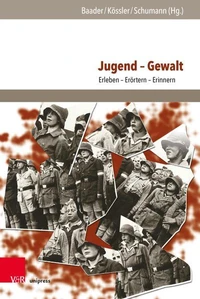Es liegt die Vermutung nahe, dass es für >die Jugend< gerade in den frühen Nachkriegsjahren einen großen Bedarf an Sinn und Trost, an Religion und >Religioidem< (Simmel) gegeben habe. Aber war es tatsächlich so? Gerade die junge Generation hatte sich mit einer nie dagewesenen »transzendentalen Obdachlosigkeit« (G. Lukács) auseinanderzusetzen. Wenn sie das denn wirklich tat! Wie ging sie mit der Schuldfrage um? Griff sie auf das zurück, was sich in Literatur, Philosophie, Theologie längst >bewährt< hatte? Konnten die Vergemeinschaftungsprozesse der historischen Jugendbewegung mit ihrer Semantik noch für die Bedürfnisse nach weltanschaulicher Zugehörigkeit einen Raum bieten? Nahm Jugend den Charakter eines Sondermilieus an, um sich abzugrenzen von denen, die die Katastrophe zu verantworten hatten? Diesen und anderen Fragen widmet sich der vorliegende Band.
One would think that for 'the youth' there was a great need for meaning and comfort, for religion and "religioids" (Simmel), especially in the early post-war years.
But was this really the case? The young generation in particular had to deal with an unprecedented "transcendental homelessness" (G. Lukács). If it really did so! How did it deal with the question of guilt? Did it fall back on what had long been "tried and tested" in literature, philosophy, theology? Could the communal processes of the historical youth movement with its semantics still offer a space for socializing for the need for ideological affiliation? Did youth take on the character of a special milieu in order to distance itself from those who were responsible for the catastrophe? This volume deals with these and other questions.
Es liegt die Vermutung nahe, dass es für >die Jugend< gerade in den frühen Nachkriegsjahren einen großen Bedarf an Sinn und Trost, an Religion und >Religioidem< (Simmel) gegeben habe. Aber war es tatsächlich so? Gerade die junge Generation hatte sich mit einer nie dagewesenen »transzendentalen Obdachlosigkeit« (G. Lukács) auseinanderzusetzen. Wenn sie das denn wirklich tat! Wie ging sie mit der Schuldfrage um? Griff sie auf das zurück, was sich in Literatur, Philosophie, Theologie längst >bewährt< hatte? Konnten die Vergemeinschaftungsprozesse der historischen Jugendbewegung mit ihrer Semantik noch für die Bedürfnisse nach weltanschaulicher Zugehörigkeit einen Raum bieten? Nahm Jugend den Charakter eines Sondermilieus an, um sich abzugrenzen von denen, die die Katastrophe zu verantworten hatten? Diesen und anderen Fragen widmet sich der vorliegende Band.
One would think that for 'the youth' there was a great need for meaning and comfort, for religion and "religioids" (Simmel), especially in the early post-war years.
But was this really the case? The young generation in particular had to deal with an unprecedented "transcendental homelessness" (G. Lukács). If it really did so! How did it deal with the question of guilt? Did it fall back on what had long been "tried and tested" in literature, philosophy, theology? Could the communal processes of the historical youth movement with its semantics still offer a space for socializing for the need for ideological affiliation? Did youth take on the character of a special milieu in order to distance itself from those who were responsible for the catastrophe? This volume deals with these and other questions.

 , qui est-ce ?
, qui est-ce ?